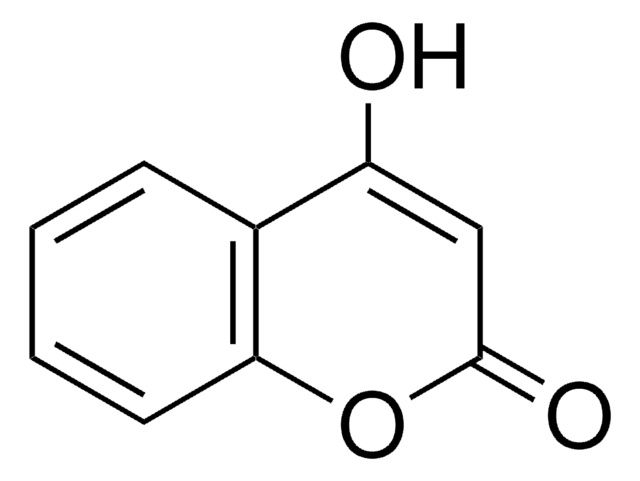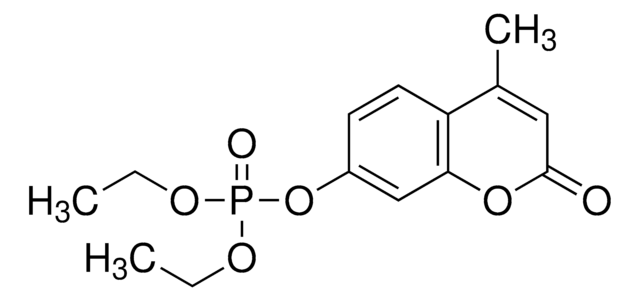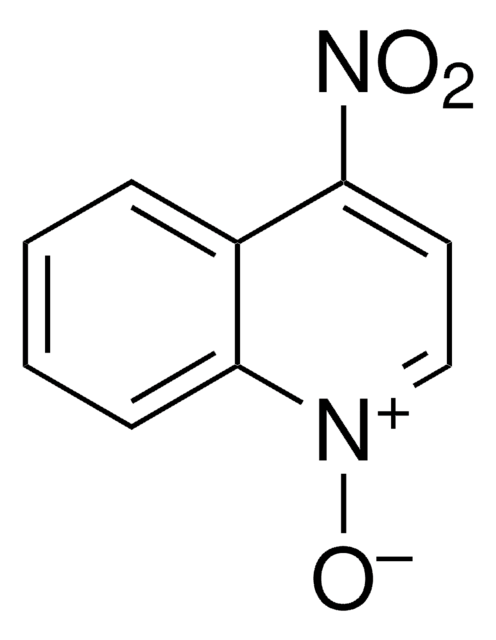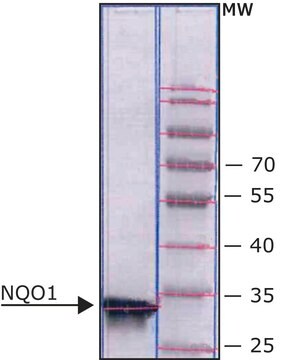M1390
3,3′-Methylene-bis(4-hydroxycoumarin)
Synonyme(s) :
Bishydroxycoumarin, Dicoumarol, Dicumarol
About This Item
Produits recommandés
Source biologique
synthetic (organic)
Niveau de qualité
Essai
≥98% (TLC)
Forme
powder
Pf
290-292 °C (lit.)
Solubilité
pyridine: 50 mg/mL, clear, faintly yellow to brownish-yellow
Chaîne SMILES
OC1=C(CC2=C(O)c3ccccc3OC2=O)C(=O)Oc4ccccc14
InChI
1S/C19H12O6/c20-16-10-5-1-3-7-14(10)24-18(22)12(16)9-13-17(21)11-6-2-4-8-15(11)25-19(13)23/h1-8,20-21H,9H2
Clé InChI
DOBMPNYZJYQDGZ-UHFFFAOYSA-N
Informations sur le gène
human ... CYP2C9(1559) , VKORC1(79001)
Vous recherchez des produits similaires ? Visite Guide de comparaison des produits
Actions biochimiques/physiologiques
Mention d'avertissement
Danger
Mentions de danger
Conseils de prudence
Classification des risques
Acute Tox. 3 Oral - Aquatic Chronic 2 - STOT RE 1 Oral
Code de la classe de stockage
6.1C - Combustible acute toxic Cat.3 / toxic compounds or compounds which causing chronic effects
Classe de danger pour l'eau (WGK)
WGK 3
Point d'éclair (°F)
Not applicable
Point d'éclair (°C)
Not applicable
Équipement de protection individuelle
Eyeshields, Faceshields, Gloves, type P2 (EN 143) respirator cartridges
Faites votre choix parmi les versions les plus récentes :
Déjà en possession de ce produit ?
Retrouvez la documentation relative aux produits que vous avez récemment achetés dans la Bibliothèque de documents.
Les clients ont également consulté
Notre équipe de scientifiques dispose d'une expérience dans tous les secteurs de la recherche, notamment en sciences de la vie, science des matériaux, synthèse chimique, chromatographie, analyse et dans de nombreux autres domaines..
Contacter notre Service technique













